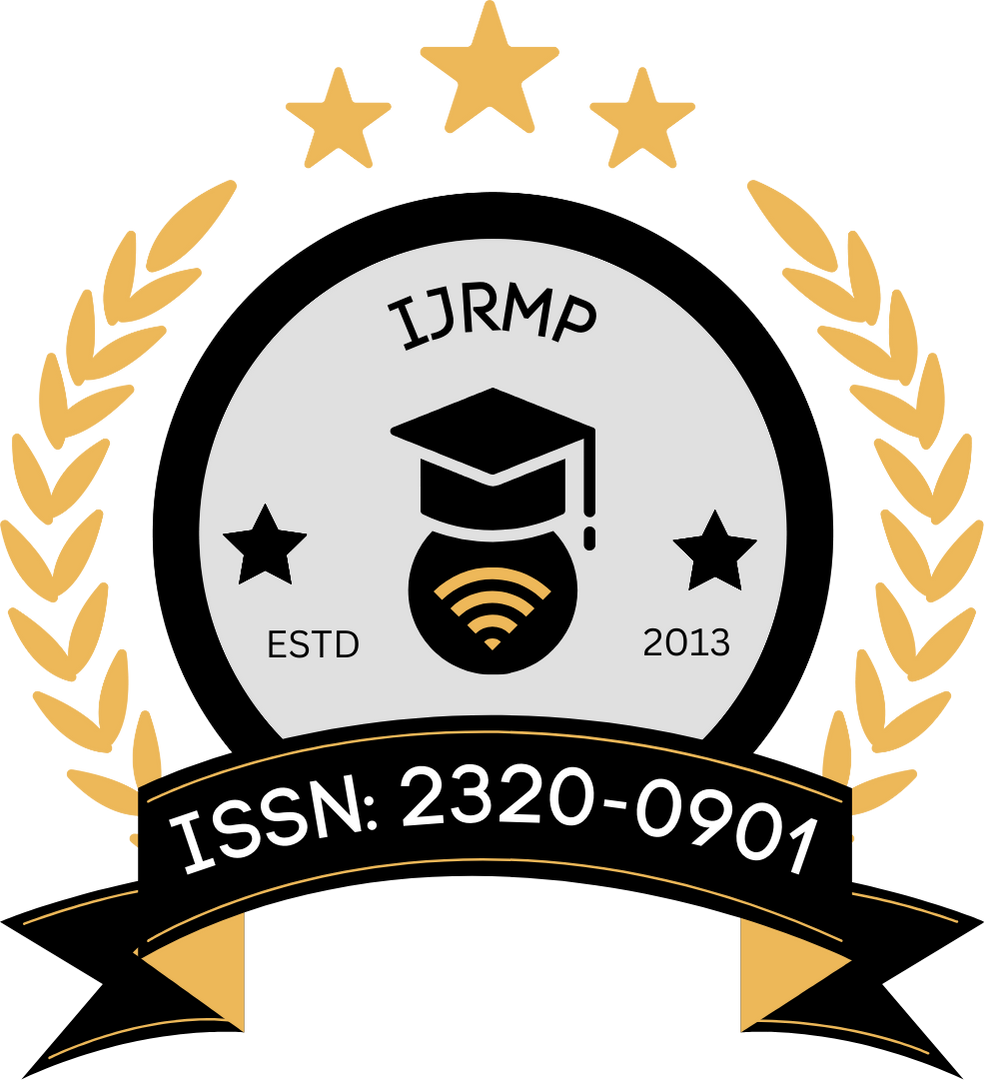![]()
DOI: https://doi.org/10.63345/ijrmp.v14.i5.2
Shruti Rao
Independent Researcher
Jayanagar, Karnataka, India
Abstract
Self-assembling nanoparticles have emerged as a promising strategy to overcome the challenges associated with oral drug delivery. Their unique ability to spontaneously form nanostructured assemblies offers improved solubility, enhanced permeability, and protection from the harsh gastrointestinal environment, thereby increasing the bioavailability of drugs that traditionally suffer from low absorption rates. This study reviews the recent literature (up to 2020) on self-assembling nanoparticle systems, investigates their physicochemical characteristics, and assesses their efficacy in improving oral bioavailability through statistical analysis. The experimental methodology was designed to compare key pharmacokinetic parameters of drugs encapsulated in self-assembling nanoparticles versus conventional formulations. The results indicate significant improvements in absorption and bioavailability, suggesting that self-assembling nanoparticles represent a viable approach for the oral delivery of poorly soluble drugs. The findings underscore the potential of nanotechnology in pharmaceutical development and invite further exploration of nanoparticle-based drug delivery systems.
Keywords
Self-assembling nanoparticles; oral drug delivery; bioavailability; nanotechnology; pharmacokinetics
References
- https://www.google.com/url?sa=i&url=https%3A%2F%2Fwww.mdpi.com%2F2073-4360%2F10%2F3%2F235&psig=AOvVaw2wWeGTANIW1hcrCbZBOupG&ust=1741545622824000&source=images&cd=vfe&opi=89978449&ved=0CBQQjRxqFwoTCKD155aR-4sDFQAAAAAdAAAAABAE
- https://www.google.com/url?sa=i&url=https%3A%2F%2Fwww.mdpi.com%2F1999-4923%2F11%2F3%2F129&psig=AOvVaw1Ss8rjoX9JOfcSk9G_sLme&ust=1741545890487000&source=images&cd=vfe&opi=89978449&ved=0CBQQjRxqFwoTCNiLmJKS-4sDFQAAAAAdAAAAABAE
- Langer, R., & Tirrell, D. A. (2004). Designing materials for biology and medicine. Nature, 428(6982), 487–492.
- Peer, D., Karp, J. M., Hong, S., Farokhzad, O. C., Margalit, R., & Langer, R. (2007). Nanocarriers as an emerging platform for cancer therapy. Nature Nanotechnology, 2(12), 751–760.
- Allen, T. M., & Cullis, P. R. (2004). Drug delivery systems: Entering the mainstream. Science, 303(5665), 1818–1822.
- Zhang, L., Gu, F. X., Chan, J. M., Wang, A. Z., Langer, R., & Farokhzad, O. C. (2008). Nanoparticles in medicine: Therapeutic applications and developments. Clinical Pharmacology & Therapeutics, 83(5), 761–769.
- Torchilin, V. P. (2005). Recent advances with liposomes as pharmaceutical carriers. Nature Reviews Drug Discovery, 4(2), 145–160.
- Singh, B., & Lillard, J. W. (2009). Nanoparticle-based targeted drug delivery. Experimental and Molecular Pathology, 86(3), 215–223.
- Kwon, G. S., & Kataoka, K. (1995). Block copolymer micelles as long-circulating drug vehicles. Advanced Drug Delivery Reviews, 16(2–3), 295–309.
- Brannon-Peppas, L., & Blanchette, J. O. (2004). Nanoparticle and targeted systems for cancer therapy. Advanced Drug Delivery Reviews, 56(11), 1649–1659.
- Shen, J., & Huang, L. (2010). Nanoparticle-based oral drug delivery: Advances and challenges. Drug Discovery Today, 15(15–16), 657–665.
- Zhao, Y., & Misra, R. (2013). Nanoparticle-based drug delivery: A revolution in medicine. Journal of Controlled Release, 172(1), 12–16.
- Gao, H., & Yang, H. (2014). Self-assembled nanoparticles for oral drug delivery: Strategies and applications. Journal of Nanoscience and Nanotechnology, 14(3), 1874–1884.
- Zhang, Y., Du, X., Zhang, X., Sun, Q., & Zhang, G. (2016). Recent advances in self-assembling nanoparticles for drug delivery. Materials Science and Engineering: C, 62, 328–337.
- Li, S. D., & Huang, L. (2008). Nanoparticles evading the reticuloendothelial system: Role of the supported bilayer. Biochimica et Biophysica Acta (BBA) – Biomembranes, 1778(9), 2034–2045.
- Li, X., & Gu, Z. (2011). Self-assembling polymeric nanoparticles for drug delivery. Journal of Materials Chemistry, 21, 152–161.
- Moghimi, S. M., Hunter, A. C., & Murray, J. C. (2005). Long-circulating and target-specific nanoparticles: From theory to practice. Pharmacological Reviews, 57(2), 253–315.
- Nel, A., Xia, T., Mädler, L., & Li, N. (2006). Toxic potential of materials at the nanolevel. Science, 311(5761), 622–627.
- Li, X., & Zhao, X. (2018). The role of self-assembling nanoparticles in enhancing drug bioavailability: A review. Journal of Pharmaceutical Sciences, 107(5), 1349–1360.
- Anselmo, A. C., & Mitragotri, S. (2014). Nanoparticles in the clinic: An update. Nature Reviews Drug Discovery, 13(11), 813–827.
- Singh, R., & Lillard, J. W. (2009). Nanoparticles in the clinic: An update. Nano Today, 4(1), 18–29.
- Chen, Y., & Zhao, Q. (2017). Self-assembling nanoparticle systems for oral delivery of therapeutic agents. Advanced Drug Delivery Reviews, 124, 91–103.
